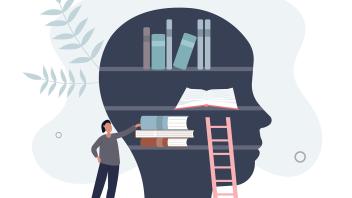If you see the words brain-based, run. That’s the advice from David Daniel, a researcher at James Madison University. And it’s not just Daniel that feels that way. His viewpoint supported by cognitive psychologist Daniel Willingham at UVA and Larry Cuban , a former teacher, superintendent, university professor, researcher, and author. Both experts suggest that the existing brain-based research just isn’t advanced enough (yet) to give teachers any practical advice about curriculum and instruction. Willingham goes so far as to say, “Most of what you see advertised as educational advice rooted in neuroscience is bunkum.”
That’s not to say that education hasn’t benefited from neuroscience. Thanks to neuroscience research, we know a lot more about why some kids have trouble learning to read. Imaging techniques examine brain activity in typical and dyslexic readers and have demonstrated differences in brain activity of the two types of readers. Dyslexia often arises from impaired phonological awareness, the auditory analysis of spoken language that relates the sounds of language to print. We also know much more about successful teaching approaches. Reading instruction that includes training in specific areas can alter brain function in atypical readers. These exciting areas of brain research hold promise for struggling readers, as well as those with brain injury.
Despite these advances, we’re not at the point of being able to use brain-based information to create specific curricular materials or brain exercises that are based in any science. This isn’t hot-off-the-press news (I blogged about this in ‘08) but I’m compelled to write again as I look at the conference schedules for so many upcoming reading conference sessions. I’ll borrow Daniel’s advice: If you see the words brain-based, run.
About the Author
Along with her background as a professor, researcher, writer, and teacher, Joanne Meier is a mom. Join Joanne as she shares her experiences raising her own young readers, and guides parents and teachers on the best practices in reading.

